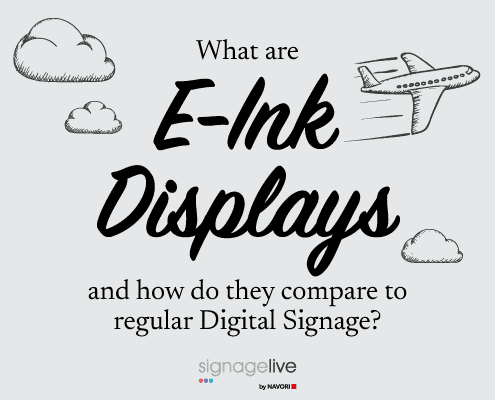
Digital Signage is revolutionising the way sports events are experienced by fans, teams, and sponsors. Through the use of LCD and LED displays, sports venues are able to showcase real-time statistics, team rosters, and personalised advertising to enhance the viewing experience for attendees.
One of the most significant ways Digital Signage is transforming sports events is by providing real-time updates and information to fans. In the past, fans had to rely on scoreboards and their own personal devices to stay up-to-date on the game. With Digital Signage, fans can now access a variety of information, including live stats, player profiles, and instant replays, all on the same screen. This allows fans to stay more engaged with the game and helps to create a more immersive viewing experience.
Cloud-based content management systems (CMS) enable updates to be scheduled or delivered in real-time to specific screens, or across an entire network, and from absolutely anywhere. Centralising the content management process, enterprise-grade systems work well for large networks, coming with a whole host of security features, including Two-factor Authentication.
Through CMS multi-zone template designs, event organisers also have the flexibility to feature player statistics alongside profile shots and brief biographies.
To ensure the highest level of security, consider investing in a CMS solution from an
ISO-27001-certified CMS provider that has been verified to be able to handle and protect large volumes of data.

Digital Signage is also changing the way teams and sponsors interact with fans. With the ability to display personalised advertisements and promotions, teams and sponsors can target specific groups of fans and offer them customised deals and experiences. This not only helps to generate revenue for the team, but also enhances the overall fan experience by providing more personalised and targeted content.
Look out for CMS solutions that offer integrated vision AI solutions, such as MeldCX Viana. These platforms draw on anonymous customer analytics to boost the relevancy of your on-screen content to suit specific groups of target personas. For instance, what appears on-screen could be triggered and inspired by demographics, mood and even items of clothing and shoes. If a fan is wearing a particular sports player’s shirt, the content on-screen could potentially change to showcase similar or complementary merchandise for sale that feature the name of the same player.
Digital Signage is also enabling teams and sponsors to create a sense of connectedness and community through social media integrations. With CMS applications, such as Screenfeed and Seenspire, teams’ curated social media feeds can be displayed on-screen, so fans are able to keep track of updates from their teams and interact with them from their own devices.
To build on this sense of interaction, sports venues are increasingly using Digital Signage to deliver augmented reality (AR) and/or virtual reality (VR) experiences. This can include enabling fans to experience the game from a specific player’s own perspective, or from a 360-degree view of the action on the field.
Effective queue management is another advantage of Digital Signage. Through the use of integrated CMS services, such as Screenfeed and Seenspire, everything from sports news, and traffic updates can be featured on-screen to help keep fans entertained and reduce perceived wait times, while they queue.
CMS solutions now also offer a whole host of content tools, with some providing 500+, including free-to-use countdown timer widgets to countdown to kick-off, as well as weather widgets, which can help to deliver weather forecasts for forthcoming outdoor sports events.
Another benefit of Digital Signage is its ability to improve safety and security at sports events. Through the use of facial recognition technology, Digital Signage can be used to identify and track individuals in real-time, helping to prevent incidents such as ticket fraud and unruly behaviour.
Content management systems are also offering integrated platforms, such as Layered Solutions, which enable you to integrate emergency notification technology with your Digital Signage, so that your screens automatically display emergency alerts.
In addition to this, Digital Signage is making it easier for fans to navigate sports venues and find their way to their seats. By displaying interactive maps and directions on screens throughout the venue, fans can easily find their way around and locate the amenities they need.
Overall, Digital Signage is transforming the way sports events are experienced by providing real-time updates, personalised advertisements, improved safety and security, and easier navigation for fans. As technology continues to advance, it is likely that Digital Signage will play an even greater role in the sports industry, further enhancing the fan experience.




You must be logged in to post a comment.